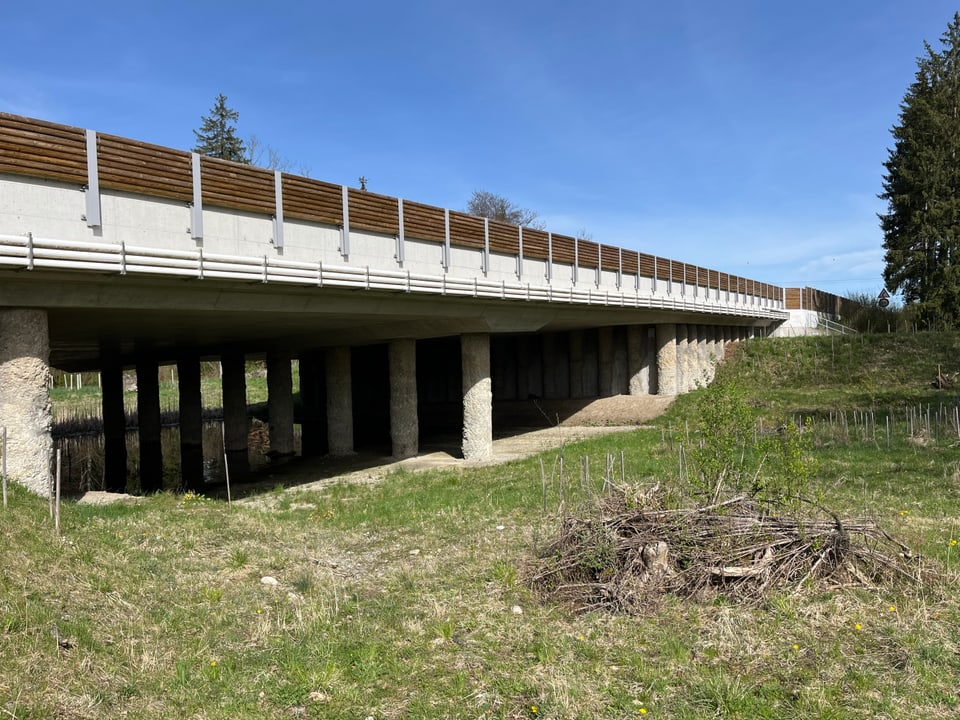Contents
Wildlife passageways are important lifelines. The example of the underpass in Kiesen BE shows what it takes to make them work.
At first glance everything looks normal: trees, bushes, grass; There are branches, twigs and leaves on the ground, and a group of cyclists ride quickly past. A bit of a forest, albeit a loud one. It is located right next to the A6 motorway near Kiesen between Bern and Thun.
Only a dam – it is around four meters high – reveals that there is something to hide from prying eyes. “The dam protects the wildlife underpass. It acts as a barrier. Bicycle traffic and joggers walk around the underpass. “It works relatively well,” says Beat Aeberhard from the Federal Roads Office Astra.
The main thing: no people
Keeping people away from wildlife passage is the be-all and end-all, says Antonio Righetti. The biologist monitors new passages on behalf of the Astra, including the new underpass in Kiesen. “At the beginning there is always a lot of curiosity, so much so that some passers-by want to take a look at the underpass themselves.”
Legend:
Trees and a dam protect the wildlife underpass in Kiesen from prying eyes.
SRF/Sabine Steiner
Wild animals need peace, otherwise a wild animal passage cannot function, explains biologist Antonio Righetti. Quiet? How does that work next to a highway? “The animals can assess the traffic on the highway. He always goes through the same place, behind a fence.” Things are different for people who, for example, walk in the forest. “They choose their own path and are therefore unpredictable for the animals.”
Traffic on the highway is predictable for animals. People don’t.
Keeping people away doesn’t work everywhere. The consequence: the animals avoid the passage. To be on the safe side, the Astra has put up an information board in Kiesen asking people to respect the needs of wild animals. “We have had good experiences with this in other places. People are showing more understanding,” says Beat Aeberhard from Astra.
A tour behind the dam, i.e. in the “taboo zone”, shows: The wild animals feel safe from hikers, bikers and joggers here at the underpass in Kiesen. Just a few steps behind the dam, Antonio Righetti discovered the first traces of game. He points to a group of trees: “A deer was sleeping on the ground where there are no leaves.”
Trees, bushes, piles of wood or stones – these are all part of a functioning passage. “Wild animals don’t feel comfortable in an open field,” says the expert. That’s why deer, rabbits, martens, etc. need hiding places. But the passage itself also has to meet the needs of the animals: “It has to be wide enough and the animals have to see that things continue on the other side.”
But bushes, trees and peace – all of this is of little use if the passage is built in the wrong place, says Antonio Righetti. The passage must connect to actual habitats on both sides, like in Kiesen. “This is the only place between Bern and Thun where wild animals have the opportunity to get to the motorway,” says the biologist. And thanks to the wildlife passage, it now also passes under the road.









